Carrots, too many of us, are an essential part of our daily diet. We have known since childhood that carrots can do wonders for our eyesight, give us a healthy complexion, and are versatile enough to be used in sweet and savory dishes. But do you know all the facts about this amazing vegetable? Here is everything you want to know about these amazing vegetables.
What is Carrot?
Carrots are root vegetables, which means they grow underground. They belong to the family of Apiaceae, and the scientific name for carrot is Daucus carota subsp. sativus. Carrots come in various colors and shapes, such as white, yellow, orange, red, purple, and black, depending on their genetic makeup and cultivar.
History and Origin of Carrot:
Carrots are believed to have originated in the Middle East, specifically in Iran. They were initially cultivated for medicinal purposes and were used in Ayurvedic medicines. Carrots made their way to Europe during the 10th century. However, they were a yellowish-purple color and not orange as we find them today. Orange carrots appeared in the 16th century when Dutch farmers started cultivating orange carrots as a tribute to their royal family, the House of Orange.
Types of Carrots:
There are several different types of carrots available on the market today. The most common varieties include Danvers, Imperator, Chantenay, and Nantes. Each variety has its unique flavor and texture.
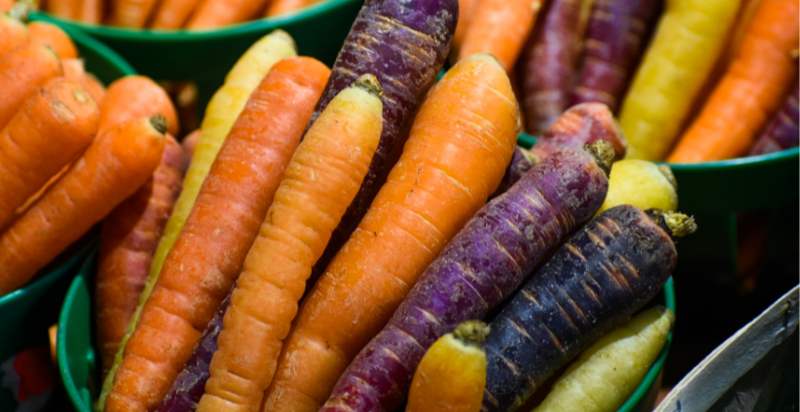
Nutrition of Carrot:
Carrots are an excellent source of vitamins and minerals. They contain a high amount of beta-carotene, converted to vitamin A in the body. Carrots are also rich in fiber, potassium, and folate. Additionally, carrots contain lutein and zeaxanthin, which can help protect against age-related eye diseases such as macular degeneration.
How to Plant Carrots?
To plant carrots, you must prepare the soil in your garden. Remove any weeds and rocks from the area, and use a tiller or spade to loosen the soil. Then spread a 2-inch layer of compost over the soil and mix it well. Carrots plant prefer a sunny spot with light, sandy loam that is not too rich in nutrients. Add some fertilizer to give them an extra boost if necessary.
Next, make shallow furrows or depressions about 1/2 inch deep in the soil and space them 6 inches apart. Drop two seeds into each furrow and cover lightly with soil. Water the area gently so as not to disturb the newly planted seeds. When germination occurs (about two weeks), thin the plants as necessary, so they are spaced 2 inches apart.
When the carrots plant have reached a few inches in length, you can start harvesting them by pulling them out of the ground. Aim to harvest your carrots plant when they reach 1-2 inches in diameter for best results. Keep an eye out for pests or diseases and remove any damaged carrots before they spread to other plants. Enjoy your freshly harvested carrots!
Finally, remember that it’s important to keep the soil well-watered throughout the growing season to ensure healthy growth and a good crop of carrots. Water whenever there is less than 1 inch of rainfall per week. This will help keep your carrot crop happy and healthy all season long.
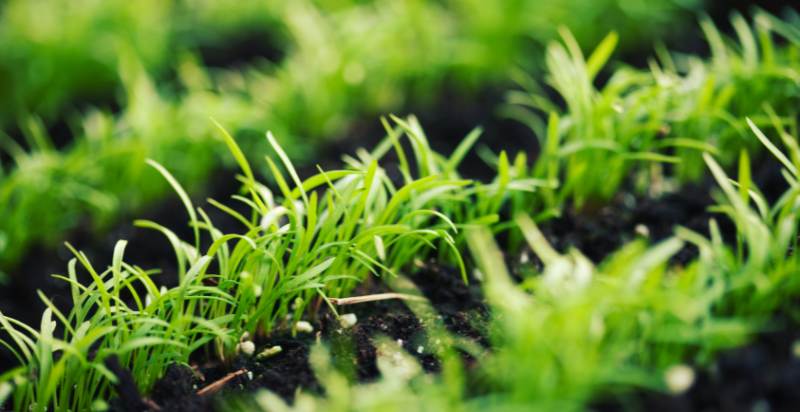
How to Care for Carrots?
Once your carrots have been planted, there are a few basic care steps you can take to ensure they stay healthy and productive.
- Keep weeds away from the carrots plant by occasionally hoeing or mulching around plants with hay or other organic materials.
- Water deeply and regularly during dry periods to keep the soil moist but not soggy. Aim for 1-2 inches of water per week.
- Fertilize your carrots plant every 3 weeks using an all-purpose vegetable fertilizer (follow the instructions on the label).
- Harvest once carrots reach 1-2 inches in diameter for the best flavor and texture. Cover with straw or plastic for fall crops to protect against frost if needed.
- Check for pests frequently, such as aphids or carrot rust flies, and treat them accordingly.
These simple steps will help you get the most out of your carrot crop and ensure a bountiful harvest of delicious carrots! Enjoy!
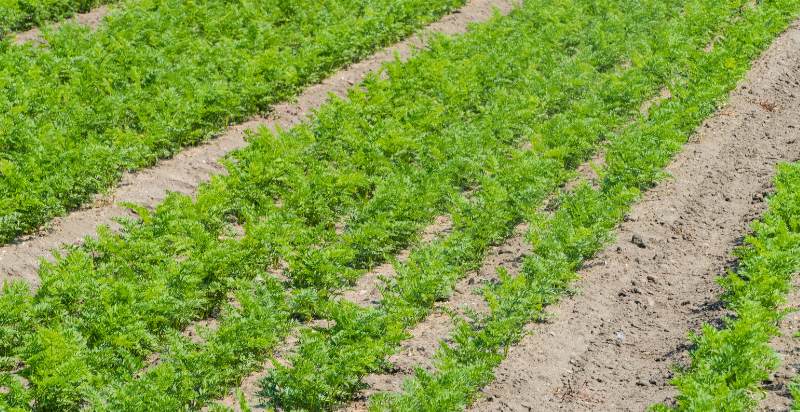
Preventions From Pests and Diseases:
There are some things you can do to help prevent pests and diseases from ruining your carrot crop.
- Rotate your crops every year to reduce the risk of diseases that may be present in the soil.
- Remove any weeds or debris around the carrot patch, as this can be a breeding ground for unwanted pests and diseases.
- Make sure you harvest carrots when they reach 1-2 inches in diameter. Otherwise, they could become susceptible to certain pests such as wireworms.
- Check your carrots regularly for signs of pest damage or disease. If found, treat with an organic pesticide suitable for the problem area.
With proper care, prevention measures, and regular harvesting, you should have no problem harvesting a delicious crop of carrots! Enjoy!
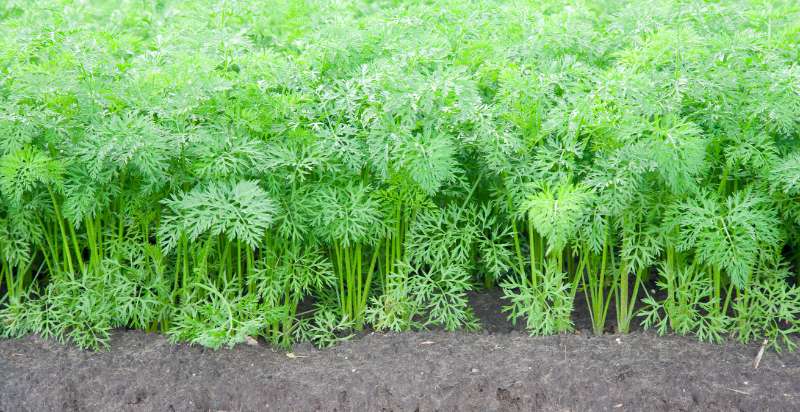
How to Harvest Carrots?
Harvesting carrots is an easy and enjoyable task. Carrots are ready to harvest when they reach 1-2 inches in diameter, depending on the variety. To harvest your carrots, grasp the top of the plant near where it emerges from the soil and gently pull it up while wiggling back and forth until it pops out of the ground.
Once you’ve harvested all of your carrots, you can store them in a cool, dry place for up to a few weeks or longer if kept at temperatures below 40°F (4°C). If you plan to freeze or can your carrots for longer storage, make sure to blanch them before freezing or adding them to canning jars.
With proper care and harvesting techniques, you can enjoy a delicious crop of carrots all season long!
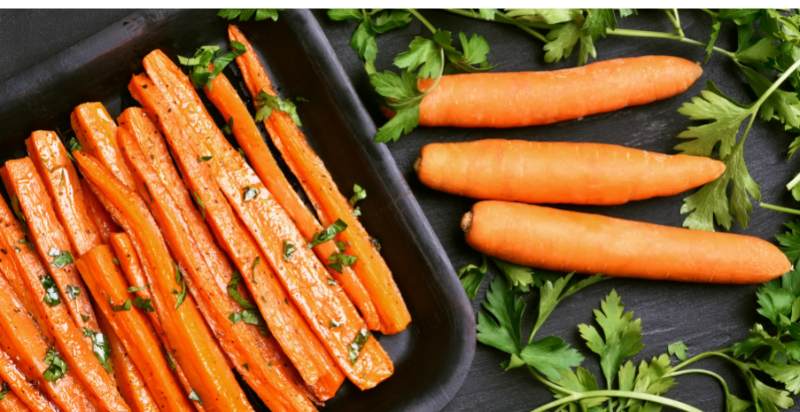
How to Store Carrots?
Once you have harvested your carrots, it’s important to store them properly to stay fresh and retain their flavor. The best way to store carrots is in a cool, dark place like the refrigerator or an insulated root cellar. To prepare for storage, trim off any green tops (they can draw moisture away from the roots), brush off any dirt, then rinse with cold water if necessary. Dry them thoroughly before storing them.
If you plan to store carrots for more than a few days, wrap them loosely in plastic, leaving some space for air circulation. This will help prevent condensation formation, which can lead to spoilage and mold. Carrots stored this way should last between 2-3 weeks but check them periodically to ensure they are still fresh.
Carrots may also be frozen or canned for longer storage periods. Freezing is a great option if you want to preserve large amounts of carrots quickly and easily. To freeze carrots, blanch them first by boiling or steaming them until tender (roughly 3 minutes). Then cool completely before packing into freezer bags or containers with as little air as possible. Frozen carrots should stay good for up to a year.
Canning is another way to preserve carrots for long-term storage; however, it requires more time and effort than freezing. If you can get your carrots, follow the instructions and safety procedures outlined in the USDA’s Home Canning Guidelines.
Storing carrots properly will help keep them fresh and free from spoilage so that you can enjoy their sweet flavor all year round!
How to Preserve Carrots?
Preserving your carrots is a great way to ensure nutritious vegetables throughout the winter. So whether you’re looking for an easy solution or want to get creative with preserving methods, here are some tips to help you get started:
- Pickling – Pickled carrots are a delicious and easy way to preserve your harvest. Slice or grate the carrots, then pickle them in a vinegar-based solution for several days before storing them in the refrigerator or canning them for long-term storage.
- Drying – Dried carrots are an excellent source of nutrition and don’t require any special equipment to prepare. Slice or grate them into thin strips, spread them on dehydrator trays (or baking sheets) lined with parchment paper, and dry at low temperatures until crisp. Store dried carrots in airtight containers in a cool, dark place until ready to use.
- Freezing – If you’re short on time, freezing is a great option for preserving carrots. Blanch the carrots in boiling water or steam until tender (roughly 3 minutes), cool completely, then pack them into freezer bags or containers with as little air as possible. Frozen carrots should stay good for up to a year.
- Canning – For those looking to preserve large amounts of carrots quickly and easily, canning is an excellent choice. Before beginning, follow the instructions and safety procedures outlined in the USDA’s Home Canning Guidelines. Canned carrots will last for several months when stored properly at temperatures between 50-70°F.
Whatever method you choose, following these tips will help ensure that your carrot harvest is preserved for future use. So get out there and start preserving today!
How to use Carrots?
Carrots are incredibly versatile and can be enjoyed in a variety of dishes. Here are some ideas to get you started:
- Soups & Stews – Carrots’ sweet flavor makes them a perfect addition to soups, stews, and casseroles. Dice the carrots and add them to the pot for nutrition and sweetness.
- Salads – A great way to incorporate carrots into any meal is by adding them to salads. Slice or shred raw carrots to easily add a crunchy texture and bright color.
- Sautéed – For a quick side dish, sauté diced carrots with other vegetables like onions, peppers, celery, or mushrooms for an easy one-pan meal.
- Mashed – If you’re looking for a healthier alternative to mashed potatoes, try mashing steamed carrots with butter, olive oil, and garlic for an incredibly flavorful side dish.
- Juicing – Try juicing carrots with other fruits and vegetables such as apples, beets, celery, or spinach for a nutritious beverage. This is also a great way to sneak some extra veggies into picky eaters!
With so many different ways to enjoy them, it’s no wonder why carrots are one of the most popular vegetables around! So next time you crave something sweet, reach for some carrots and get creative in the kitchen.

Potential Risks from Carrots:
Though carrots are generally a safe and healthy food, they can be associated with potential risks. Carrots contain high amounts of vitamin A, which can be toxic when consumed in large doses. Additionally, eating large amounts of raw carrots can cause the body to produce excessive amounts of gas, leading to bloating and flatulence.
Enjoy your carrots in moderation as part of a balanced diet for the best results. And if you’re looking for even more nutritional benefits from your vegetables, consider supplementing your diet with a multivitamin or other nutrient-rich products.
If you plan to preserve your carrot harvest for future use, follow the instructions and safety procedures carefully as outlined in the USDA’s Home Canning Guidelines. This will ensure that your carrots are properly preserved and safe to eat for months.
Finally, always store any canned or dried carrots in airtight containers at temperatures between 50-70°F and away from heat sources. Doing so will help preserve their flavor and nutritional value for longer periods.
Following these tips, you can enjoy your carrot harvest long after the season ends! So get out there and start preserving today!
Conclusion
Carrots are a nutritious and versatile vegetable enjoyed in various dishes. Whether you prefer to enjoy raw, cooked, canned, or dried carrots, following the proper safety guidelines and storing them in airtight containers away from heat sources can ensure that your carrots stay fresh and flavorful for months to come. So get out there and start preserving today!
Happy harvesting!
- Everything You Wanted to Know About Red Tamarillos - June 2, 2025
- A Guide to Tulips: Everything You Need to Know & More… - June 2, 2025
- Guanabana: Description, Flavor, Benefits, And Uses - May 27, 2025

40 thoughts on “What is Carrot? How to Plant, Grow, and Harvest Carrots ”
Comments are closed.